Best Thin Crust Pizza Near You
Keep Local Thriving. Every order on Slice supports small, local shops, their families, and the community.
Thin Crust Pizza Near You
- Hacienda Heights Pizza Co
 Closed$7.65 Delivery4.7
Closed$7.65 Delivery4.7 - BJ's Pizzeria
 Closed$5.00 Delivery4.9
Closed$5.00 Delivery4.9 - Piara Pizza
 Closed$5.00 Delivery4.7
Closed$5.00 Delivery4.7 - Piara Pizza Pico Rivera
 Closed$7.65 Delivery4.2
Closed$7.65 Delivery4.2 - Pizza Guys
 Closed$5.95 Delivery3.7
Closed$5.95 Delivery3.7
- Hacienda Heights Pizza Co
 Closed$7.65 Delivery4.7
Closed$7.65 Delivery4.7 - BJ's Pizzeria
 Closed$5.00 Delivery4.9
Closed$5.00 Delivery4.9 - Piara Pizza
 Closed$5.00 Delivery4.7
Closed$5.00 Delivery4.7 - Piara Pizza Pico Rivera
 Closed$7.65 Delivery4.2
Closed$7.65 Delivery4.2 - Pizza Guys
 Closed$5.95 Delivery3.7
Closed$5.95 Delivery3.7 - Piara PizzaClosed$5.15 Delivery
- Big Mama's & Papa's Pizzeria
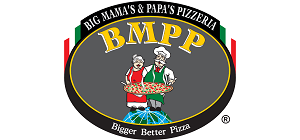 ClosedFree Delivery4.6
ClosedFree Delivery4.6 - Pasadena Pizza CoClosed$5.15 Delivery4.9
- Pizza Man
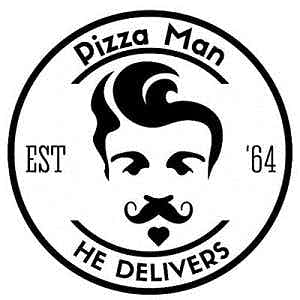 Closed$3.00 - $5.00 Delivery4.9
Closed$3.00 - $5.00 Delivery4.9 - Cafe Bambino's
 Closed$5.15 Delivery4.9
Closed$5.15 Delivery4.9 - Pie Life Pizza
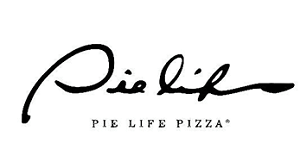 Closed$7.65 Delivery5.0
Closed$7.65 Delivery5.0 - Hala's Pizzeria
 Closed$4.99 - $9.99 Delivery4.8
Closed$4.99 - $9.99 Delivery4.8 - De Lucas Restaurant
 Closed$5.15 Delivery
Closed$5.15 Delivery - The Kitchen Italian Cafe & Pizzeria
 Closed$3.00 Delivery4.9
Closed$3.00 Delivery4.9 - Barro's Pizza
 Closed$5.00 Delivery4.9
Closed$5.00 Delivery4.9
Thin Crust Pizza in Chicago
- Cochiaro's Pizza
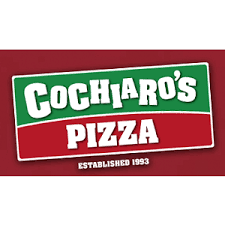 Open Now$4.50 Delivery4.8
Open Now$4.50 Delivery4.8 - Congress Pizzeria
 Open Now$5.00 - $15.00 Delivery4.8
Open Now$5.00 - $15.00 Delivery4.8 - Falco's Pizza Chicago
.jpg?auto=format&fit=max&q=10) Open Now$4.99 Delivery4.8
Open Now$4.99 Delivery4.8 - Sarpino's Pizzeria
 Open NowFree Delivery4.7
Open NowFree Delivery4.7 - Barraco's Pizza
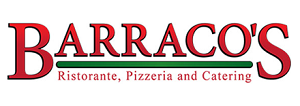 Open Now$5.00 - $6.00 Delivery4.9
Open Now$5.00 - $6.00 Delivery4.9
- Cochiaro's Pizza
 Open Now$4.50 Delivery4.8
Open Now$4.50 Delivery4.8 - Congress Pizzeria
 Open Now$5.00 - $15.00 Delivery4.8
Open Now$5.00 - $15.00 Delivery4.8 - Falco's Pizza Chicago
.jpg?auto=format&fit=max&q=10) Open Now$4.99 Delivery4.8
Open Now$4.99 Delivery4.8 - Sarpino's Pizzeria
 Open NowFree Delivery4.7
Open NowFree Delivery4.7 - Barraco's Pizza
 Open Now$5.00 - $6.00 Delivery4.9
Open Now$5.00 - $6.00 Delivery4.9 - Naples Pizza
 Open Now$4.00 - $7.00 Delivery5.0
Open Now$4.00 - $7.00 Delivery5.0 - Vini's Pizza
 Open Now$4.50 - $12.00 Delivery4.9
Open Now$4.50 - $12.00 Delivery4.9 - Rosati's Pizza of Chicago Lincoln Park
.png?auto=format&fit=max&q=10) Open Now$6.00 Delivery4.9
Open Now$6.00 Delivery4.9 - Rosati's Pizza
 Open Now$5.00 Delivery4.8
Open Now$5.00 Delivery4.8 - Cochiaro's Pizza
 Open Now$4.50 Delivery4.9
Open Now$4.50 Delivery4.9 - Suparossa
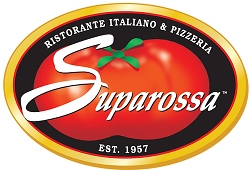 Open Now$5.00 Delivery4.8
Open Now$5.00 Delivery4.8 - Pat's Pizza
 Open Now$5.00 Delivery4.7
Open Now$5.00 Delivery4.7 - Piezano's Pizza & Grinder Co
.png?auto=format&fit=max&q=10) Open Now$5.00 Delivery4.7
Open Now$5.00 Delivery4.7 - Wow Pizza CafeOpen Now$5.00 Delivery4.7
- Rosati's Pizza Loop
 Open Now$5.00 Delivery4.2
Open Now$5.00 Delivery4.2
Thin Crust Pizza in New York
- Saba's Pizza
 Open Now$2.99 - $7.00 Delivery5.0
Open Now$2.99 - $7.00 Delivery5.0 - Saba's Pizza
 Open NowFree Delivery4.9
Open NowFree Delivery4.9 - Mimi's Pizza (Broadway)Open Now$2.00 Delivery5.0
- Mimi's Pizza (East 86th)
 Open Now$2.00 Delivery4.9
Open Now$2.00 Delivery4.9 - Marinara Pizza
 Open Now$2.99 Delivery4.9
Open Now$2.99 Delivery4.9
- Saba's Pizza
 Open Now$2.99 - $7.00 Delivery5.0
Open Now$2.99 - $7.00 Delivery5.0 - Saba's Pizza
 Open NowFree Delivery4.9
Open NowFree Delivery4.9 - Mimi's Pizza (Broadway)Open Now$2.00 Delivery5.0
- Mimi's Pizza (East 86th)
 Open Now$2.00 Delivery4.9
Open Now$2.00 Delivery4.9 - Marinara Pizza
 Open Now$2.99 Delivery4.9
Open Now$2.99 Delivery4.9 - Prince Street Pizza
 Open Now$5.00 - $10.00 Delivery4.9
Open Now$5.00 - $10.00 Delivery4.9 - Gina La Fornarina
 Open Now$3.99 Delivery4.9
Open Now$3.99 Delivery4.9 - Famous Famiglia Pizzeria
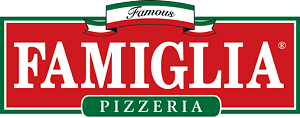 Open NowFree Delivery4.8
Open NowFree Delivery4.8 - Justino's Pizza - 10th Ave
 Open Now$1.00 Delivery4.8
Open Now$1.00 Delivery4.8 - Libretto's Pizzeria
 Open NowFree Delivery5.0
Open NowFree Delivery5.0 - Lunetta Pizza & Restaurant
 Open Now$1.50 Delivery5.0
Open Now$1.50 Delivery5.0 - Pizza Park
 Open Now$2.00 Delivery4.7
Open Now$2.00 Delivery4.7 - Uncle Tony's PizzaOpen Now$1.00 Delivery4.8
- La Trattoria PizzaOpen Now$2.00 Delivery5.0
- Famous Famiglia Pizza
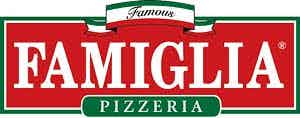 Open NowFree Delivery5.0
Open NowFree Delivery5.0
Thin Crust Pizza in Brooklyn
- Pizza Daddy
 Open NowFree Delivery5.0
Open NowFree Delivery5.0 - Nonno's Pizza
 Open Now$1.99 Delivery4.8
Open Now$1.99 Delivery4.8 - Cozie's Pizzeria & Cafe
 Open NowFree Delivery4.8
Open NowFree Delivery4.8 - Front Street Pizza
 Open Now$2.95 Delivery4.9
Open Now$2.95 Delivery4.9 - Knapp Pizza II
 Open Now$1.00 Delivery4.8
Open Now$1.00 Delivery4.8
- Pizza Daddy
 Open NowFree Delivery5.0
Open NowFree Delivery5.0 - Nonno's Pizza
 Open Now$1.99 Delivery4.8
Open Now$1.99 Delivery4.8 - Cozie's Pizzeria & Cafe
 Open NowFree Delivery4.8
Open NowFree Delivery4.8 - Front Street Pizza
 Open Now$2.95 Delivery4.9
Open Now$2.95 Delivery4.9 - Knapp Pizza II
 Open Now$1.00 Delivery4.8
Open Now$1.00 Delivery4.8 - Bay Ridge Pizza
 Open NowFree Delivery4.7
Open NowFree Delivery4.7 - Bklyn Pizza
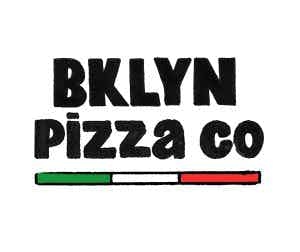 Open NowFree Delivery4.8
Open NowFree Delivery4.8 - Crown Heights PizzaOpen Now$3.00 Delivery5.0
- Angela's Pizzeria
 Open Now$2.00 Delivery4.8
Open Now$2.00 Delivery4.8 - Pronto Pizza
 Open Now$1.00 - $3.00 Delivery4.9
Open Now$1.00 - $3.00 Delivery4.9 - Gravesend Pizzeria
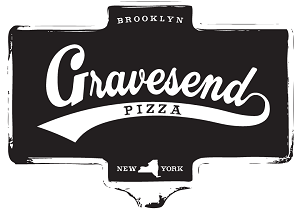 Open Now$2.00 Delivery4.7
Open Now$2.00 Delivery4.7 - Cafe 58 Pizzeria & Grill
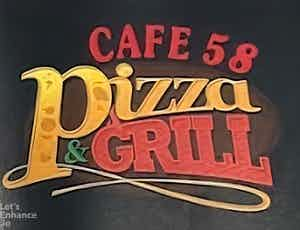 Open NowFree Delivery4.9
Open NowFree Delivery4.9 - El Centenario PizzaOpen NowFree Delivery4.6
- Buonissima Pizza
 Open NowFree Delivery4.9
Open NowFree Delivery4.9 - Pino's La Forchetta PizzaOpen Now$3.00 Delivery4.9
Thin Crust Pizza in Philadelphia
- Randazzo's Pizza
 Open Now$2.99 Delivery5.0
Open Now$2.99 Delivery5.0 - Mario's Pizza
 Open Now$2.00 Delivery4.9
Open Now$2.00 Delivery4.9 - Original Village Pizza
 Open Now$4.95 Delivery5.0
Open Now$4.95 Delivery5.0 - Pat's Pizza & Pasta
 Open Now$3.99 Delivery4.9
Open Now$3.99 Delivery4.9 - Dolce Carini Pizza
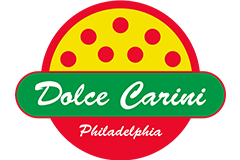 Open Now$2.99 Delivery4.8
Open Now$2.99 Delivery4.8
- Randazzo's Pizza
 Open Now$2.99 Delivery5.0
Open Now$2.99 Delivery5.0 - Mario's Pizza
 Open Now$2.00 Delivery4.9
Open Now$2.00 Delivery4.9 - Original Village Pizza
 Open Now$4.95 Delivery5.0
Open Now$4.95 Delivery5.0 - Pat's Pizza & Pasta
 Open Now$3.99 Delivery4.9
Open Now$3.99 Delivery4.9 - Dolce Carini Pizza
 Open Now$2.99 Delivery4.8
Open Now$2.99 Delivery4.8 - Italian ExpressOpen Now$3.00 Delivery5.0
- Speedy's PizzaOpen Now$2.50 Delivery4.7
- Perry's Pizza
 Open Now$2.00 - $2.50 Delivery4.9
Open Now$2.00 - $2.50 Delivery4.9 - Mr P Pizza & Pasta
 Open Now$3.00 Delivery4.5
Open Now$3.00 Delivery4.5 - D'Oliva EVOO Pizza & Grill
 Open Now$2.00 Delivery4.8
Open Now$2.00 Delivery4.8 - Franco's Pizza
 Open Now$4.99 Delivery5.0
Open Now$4.99 Delivery5.0 - Big Daddy Pizza
 Open Now$2.50 Delivery5.0
Open Now$2.50 Delivery5.0 - Golden Crust Pizza III
 Open Now$3.00 Delivery4.8
Open Now$3.00 Delivery4.8 - Holme Style Pizza
 Open Now$3.99 Delivery4.8
Open Now$3.99 Delivery4.8 - Original Boston Pizza - Mayfair
 Open Now$2.00 Delivery4.9
Open Now$2.00 Delivery4.9
Thin Crust Pizza in Washington, D.C.
- Italian Pizza Kitchen
 Open Now$3.99 - $5.99 Delivery4.8
Open Now$3.99 - $5.99 Delivery4.8 - Angelico Pizzeria
 Open Now$2.99 Delivery4.8
Open Now$2.99 Delivery4.8 - Angelico Pizzeria
 Open Now$3.99 Delivery4.9
Open Now$3.99 Delivery4.9 - Angelico Pizzeria
 Open Now$2.99 Delivery5.0
Open Now$2.99 Delivery5.0 - Passato PizzaOpen NowFree Delivery4.8
- Italian Pizza Kitchen
 Open Now$3.99 - $5.99 Delivery4.8
Open Now$3.99 - $5.99 Delivery4.8 - Angelico Pizzeria
 Open Now$2.99 Delivery4.8
Open Now$2.99 Delivery4.8 - Angelico Pizzeria
 Open Now$3.99 Delivery4.9
Open Now$3.99 Delivery4.9 - Angelico Pizzeria
 Open Now$2.99 Delivery5.0
Open Now$2.99 Delivery5.0 - Passato PizzaOpen NowFree Delivery4.8
- Pizzoli's Pizzeria
 Open Now$5.00 Delivery4.5
Open Now$5.00 Delivery4.5 - Pizza Boli's
 Open Now$3.99 Delivery4.7
Open Now$3.99 Delivery4.7 - Pizza Boli's
 Open Now$3.50 Delivery4.6
Open Now$3.50 Delivery4.6 - Pizza Boli's
 Open Now$5.00 Delivery4.8
Open Now$5.00 Delivery4.8 - Georgetown Pizza & Grill
 Open Now$4.95 Delivery4.7
Open Now$4.95 Delivery4.7 - Bite MeOpen Now$4.49 Delivery4.7
- Pizza Boli's
 Open Now$3.99 Delivery4.8
Open Now$3.99 Delivery4.8 - Pizza Boli's (3027 Naylor Rd)
 Open Now$4.99 Delivery4.8
Open Now$4.99 Delivery4.8 - Angelico Pizzeria
 Closed$2.99 Delivery4.9
Closed$2.99 Delivery4.9 - Aladdin's Kitchen
 Open Now$1.99 - $30.00 Delivery4.7
Open Now$1.99 - $30.00 Delivery4.7
What Is a Thin Crust Pizza?
Pizza comes in so many different combinations that it can fit anyone's taste. There are various toppings that can go on a pizza, but one of the defining characteristics is also the crust.
The usual suspects, if you will, are the thin and thick crust pies, as well as the deep-dish. Today, we'll focus on the classic thin-crust option.
A thin crust is associated with a few popular types of pizza. So, let's take a look:
- New York-style - Pretty much the most famous pizza in America, the NY-style pie features a hand-tossed thin crust. It is typically offered in slices that you can grab on the go. The crust is also crisp on the edges and you can easily fold your slices. The standard ingredients are tomato sauce and mozzarella.
- Neapolitan - This is the original thin-crust pizza from Italy. It comes with tomato and mozzarella but they must be of a specific kind for authenticity. That would be San Marzano tomatoes and Mozzarella di Bufala Campana. There are strict rules for the dough as well. Also, the pizza is baked in a wood-fired oven at 905 °F.
- Tavern-style - While Chicago is known for its deep-dish pies, it also has a locally popular thin-crust pizza. In fact, it is even thinner (and crunchier) than the pizza in New York. That's because the dough is rolled rather than hand-tossed. This pie is cut into squares which is also called tavern-style or party cut.
- New Haven-style - Also known as apizza, this pie comes from New Haven, Connecticut. Based on the Neapolitan version, it has a thin charred crust and is baked in a coal-fired oven. The mozzarella doesn't come by default and the terms "mootz" or "no-mootz" are used to specify whether you'd like some or not.
- St. Louis-style - This pizza is made without yeast and thus features a thin crust that resembles a cracker. It also comes with Provel cheese which is rather exclusive for the St. Louis area. Due to its characteristics, the crust isn't suitable for folding and the pie is cut into squares. By the same token, it can easily handle being heavy on the toppings.
Luckily for us, these pizza types can be found outside their original areas. Hence, you can enjoy a variety of thin-crust pies independent of your location. The choice is yours and deliciousness awaits you!
Where Did Thin Crust Pizza Originate?
As mentioned above, the original thin-crust pizza is the Neapolitan one. Thus, the history of thin-crust pies starts in Italy.
On that note, let's take a look at pizza Margherita. This version of the Neapolitan pie comes with San Marzano tomatoes, mozzarella, and basil. The colors of these ingredients - red, white, and green - symbolize the colors of the Italian flag.
It was first made in 1889 by Raffaele Esposito. He created it in honor of Queen Margherita who was visiting the Royal Palace of Capodimonte in Naples, Italy. That's why this pizza carries her name.
As many Italians immigrated to America at the turn of the 20th century, pizza also made its way there.
The first pizzeria in the United States was opened in New York in 1905. It was called Lombardi's Pizza with a location on Spring Street. The owner was Gennaro Lombardi, a pizza maker originally from Naples.
Since many customers at the time couldn't afford a whole pie, they would instead grab just a slice. Thus, the tradition of enjoying NY-style pizza in slices began.
In Chicago, pizza was initially sold in taverns. It was also a way to prompt the visitors to drink alcohol. It wasn't unusual that pizza even came as a free bite with your drink.
Moreover, these taverns often lacked plates, so they cut the pizza into squares and served it on napkins.
In New Haven, the first tomato pies were sold at Frank Pepe's pizzeria, which opened in 1925. The owner was Frank Pepe and his pies featured tomatoes, pecorino romano cheese, oregano, garlic, and olive oil.
As for St. Louis, they were late bloomers when it came to pizza. It wasn't until visitors from out of town started to request pizza that Amadeo Fiore opened his place Melrose Café & Pizzeria.
Of course, it didn't take long for all the locals to discover this great new dish and so pizza spread all across town. Another popular pizzeria that opened was Imo's Pizza in 1963. Luigi's Restaurant, opened in 1953, was the first to use Provel cheese.
How Many Calories Are in a Thin Crust Pizza?
The calories in a thin-crust pizza can vary, depending on the toppings. For example, a slice of Neapolitan Margherita pizza has an average of 300 calories, a slice of NY-style cheese pizza has around 400 calories, and the St. Louis thin-crust cheese pie has around 330 to 350 calories.
The calories in the thin crust pizza are mostly from the carbs (33%) and fats (48%), and a small amount comes from the proteins (19%).
Where Can I Find Thin Crust Pizza Near Me?
Looking for a delicious thin-crust pizza for pickup or delivery? Find the best thin-crust pizza near you via Slice.
If in Philadelphia order a traditional hand-tossed pizza from Mario’s Pizza, or a thin-crust pizza from Villa Palermo when in Chicago. Both are available for pickup and delivery in the Slice app.
Of course, for other places, just check the listings on this page.

Testimonials
Best thin crust pizza!
Bob's Thin Crust Pizza Review
FAQ
Browse More Pizza Types
EVEN MORE PIZZA
1 Dollar Pizza
•Bar Pizza
•Brick Oven Pizza
•By the Slice Pizza
•California Pizza
•Capricciosa Pizza
•Cauliflower Pizza
•Cheap Pizza
•Chicago Thin Crust Pizza
•Coal Fired Pizza
•Dairy Free Pizza
•Deep Dish Pizza
•Dessert Pizza
•Detroit Pizza
•French Bread Pizza
•Gluten Free Pizza
•Grandma Pizza
•Grilled Pizza
•Healthy Pizza
•Montanara Pizza
•Neapolitan Pizza
•New England Pizza
•New Haven Pizza
•New York Style Pizza
•Pan Pizza
•Roman Pizza
•Seafood Pizza
•St. Louis Pizza
•Stuffed Pizza
•Thick Crust Pizza
•Thin Crust Pizza
•Tomato Pie
•Vegan Pizza
•Veggie Pizza
•Wood Fired Pizza
•












